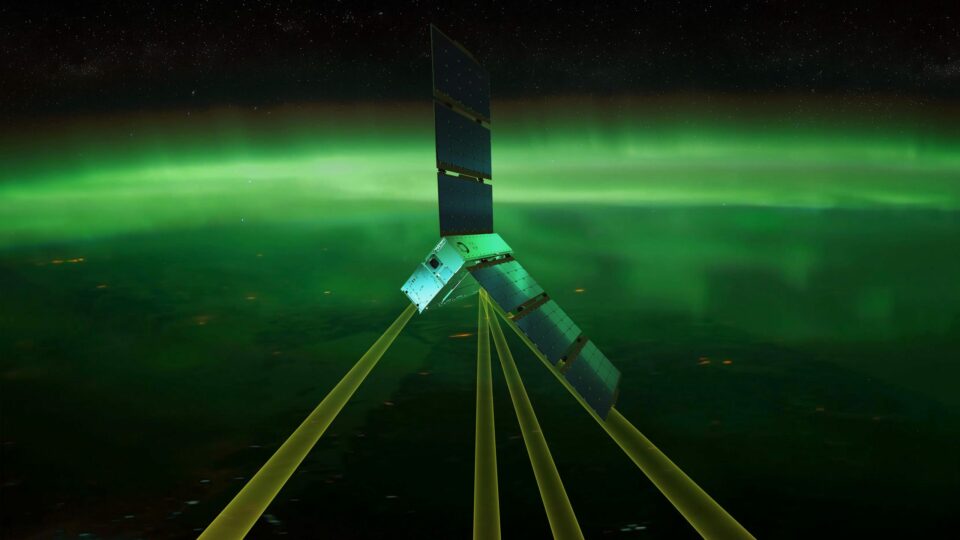Following its mid-March launch from Vandenberg Space Force Base in California, NASA’s EZIE (Electrojet Zeeman Imaging Explorer) mission has taken its first measurements, beginning a campaign to help scientists better understand Earth’s connection to space and mitigate the negative impacts of space weather on society.
These “first light” observations show that EZIE is poised to reveal crucial details about Earth’s auroral electrojets — powerful electric currents that flow through our upper atmosphere where auroras glow in the sky. The mission will map the auroral electrojets up close and in detail for the first time. These intense currents are generated in the northern and southern polar regions of our atmosphere, about 65 miles (105 kilometers) above the ground, when tremendous amounts of energy are transferred into Earth’s upper atmosphere from the solar wind. The same process can also ignite colorful auroras (northern or southern lights).
To read more, visit: https://blogs.nasa.gov/ezie/
More About the Mission
The EZIE mission is funded by the Heliophysics Division within the Science Mission Directorate at NASA Headquarters in Washington and is managed by the Explorers Program Office at NASA’s Goddard Space Flight Center in Greenbelt, Maryland. The Johns Hopkins Applied Physics Laboratory in Laurel, Maryland, leads the mission for NASA. Blue Canyon Technologies in Boulder, Colorado, built the CubeSats, and NASA’s Jet Propulsion Laboratory in Southern California built the Microwave Electrojet Magnetogram for each of the three satellites.




